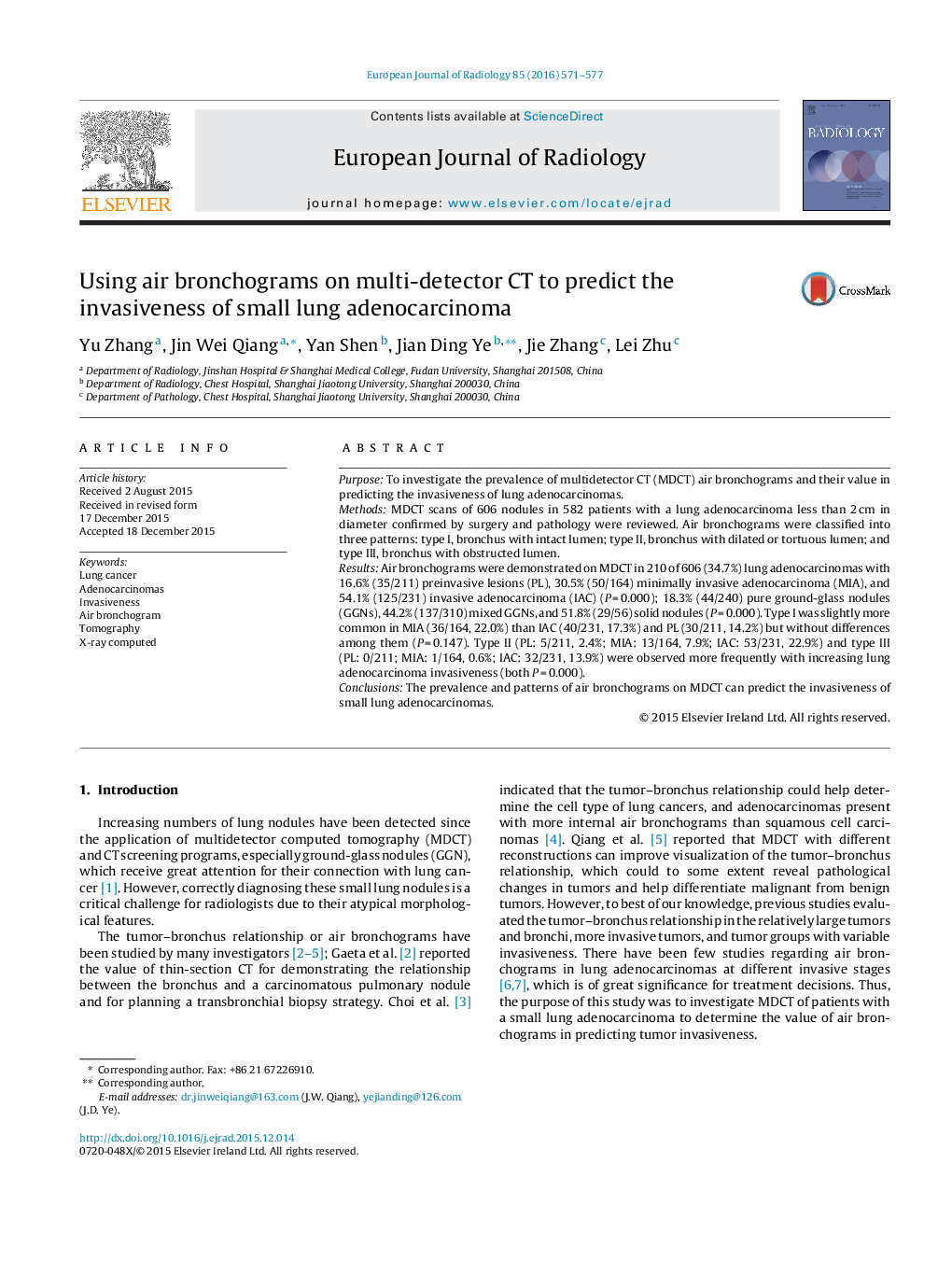| Article ID | Journal | Published Year | Pages | File Type |
|---|---|---|---|---|
| 4225062 | European Journal of Radiology | 2016 | 7 Pages |
PurposeTo investigate the prevalence of multidetector CT (MDCT) air bronchograms and their value in predicting the invasiveness of lung adenocarcinomas.MethodsMDCT scans of 606 nodules in 582 patients with a lung adenocarcinoma less than 2 cm in diameter confirmed by surgery and pathology were reviewed. Air bronchograms were classified into three patterns: type I, bronchus with intact lumen; type II, bronchus with dilated or tortuous lumen; and type III, bronchus with obstructed lumen.ResultsAir bronchograms were demonstrated on MDCT in 210 of 606 (34.7%) lung adenocarcinomas with 16.6% (35/211) preinvasive lesions (PL), 30.5% (50/164) minimally invasive adenocarcinoma (MIA), and 54.1% (125/231) invasive adenocarcinoma (IAC) (P = 0.000); 18.3% (44/240) pure ground-glass nodules (GGNs), 44.2% (137/310) mixed GGNs, and 51.8% (29/56) solid nodules (P = 0.000). Type I was slightly more common in MIA (36/164, 22.0%) than IAC (40/231, 17.3%) and PL (30/211, 14.2%) but without differences among them (P = 0.147). Type II (PL: 5/211, 2.4%; MIA: 13/164, 7.9%; IAC: 53/231, 22.9%) and type III (PL: 0/211; MIA: 1/164, 0.6%; IAC: 32/231, 13.9%) were observed more frequently with increasing lung adenocarcinoma invasiveness (both P = 0.000).ConclusionsThe prevalence and patterns of air bronchograms on MDCT can predict the invasiveness of small lung adenocarcinomas.
